“What are these flower petals?” I asked Deb. They were all over the trail; large petals striped with white, green, and orange. It was mid-May and we were spending a week at Pipestem Resort State Park in West Virginia. It was a hikers paradise. We spent every day on a different trail and that day we were following a trail from the lodge on the rim of Bluestone Gorge all the way down to the river. The striped flower petals were everywhere. Deb didn’t know what they were. We kept a lookout for a flower or bush with matching petals but never found one.
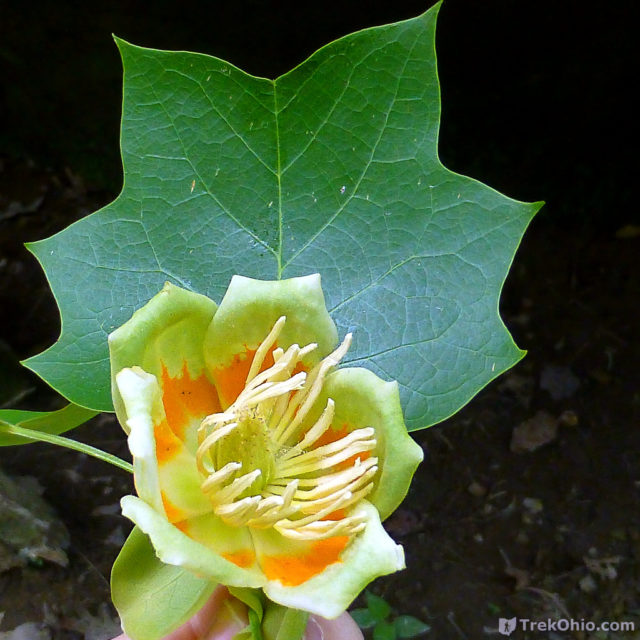
I started noticing the same petals on trails in Ohio. Finally, one day we were visiting Scioto Trail State Park. As I was climbing the fire tower I looked across at a tree top. The top of the trip was filled with the white, orange, and green striped flowers. The flowers on the trails had originated from the canopy high above us. A quick search on the internet revealed that we were looking at the flowers of the American Tulip Tree.
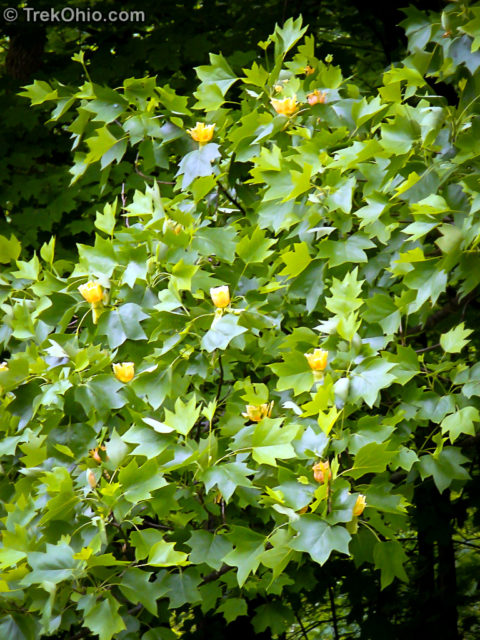
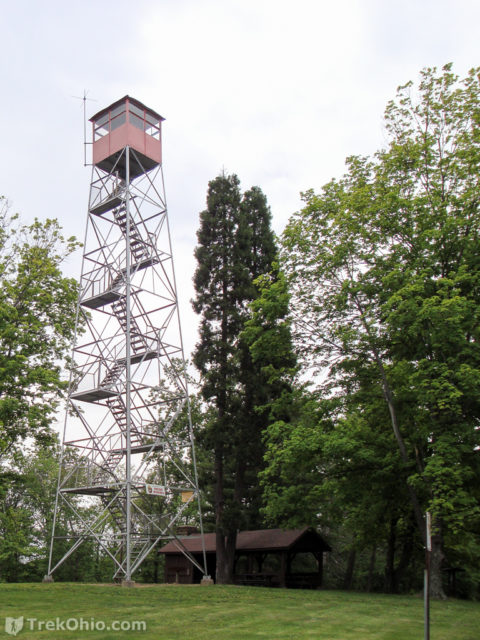
The American Tulip Tree is found throughout the eastern half of the United States. The tulip tree normally grows 60 – 90 feet (18-27m) tall, but the largest specimens can reach up to 190 feet (58m). The “Queens Giant”, a tulip tree in New York City is 134 feet tall (41 m) and is estimated to be between 350 – 450 years old.
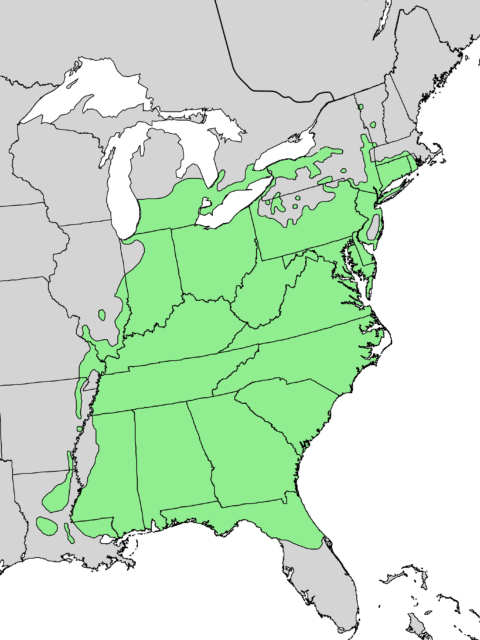
Tulip Trees are quite common in the Ohio forest. The trees grow straight and tall and have a furrowed bark. Older specimens usually lose their lower branches, so the branches and leaves are high up in the canopy. The trees go by many names; tulip tree, whitewood, fiddle-tree, and yellow poplar. The Latin genus ‘Liriodendron’ means ‘lily tree’. However, the tree is not related to lilies, tulips, or even poplars. It is a member of the magnolia family.
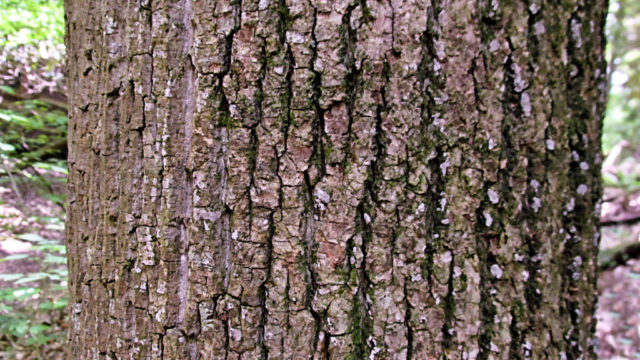
Since our early encounter, we’ve seen tulip trees all over Ohio. Miller Nature Sanctuary in Highland County has a Tuliptree Trail, as does Clear Creek Metro Park in Fairfield / Hocking counties. While hiking at Lamping Homestead in Wayne National Forest we noticed that the pattern and color of the Eastern Box Turtle’s shell blends in perfectly with leaf litter from tulip trees.
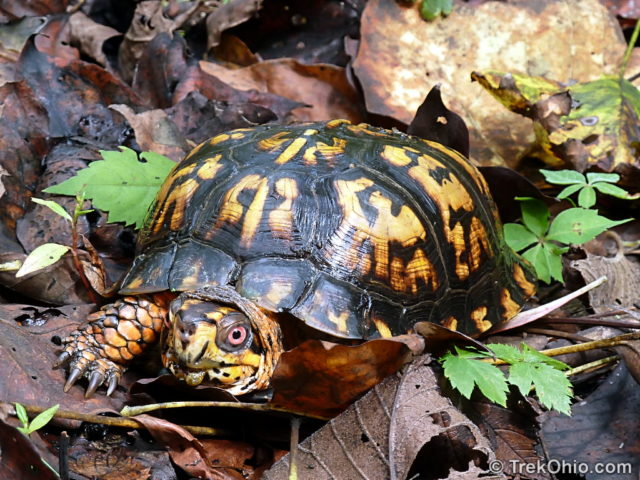
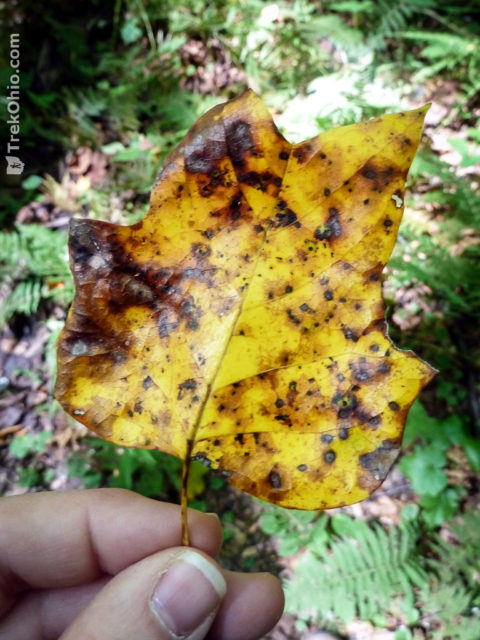
So next time you see the trail covered with large white, orange, and green striped petals, look-up. You may be standing beneath a tulip tree.
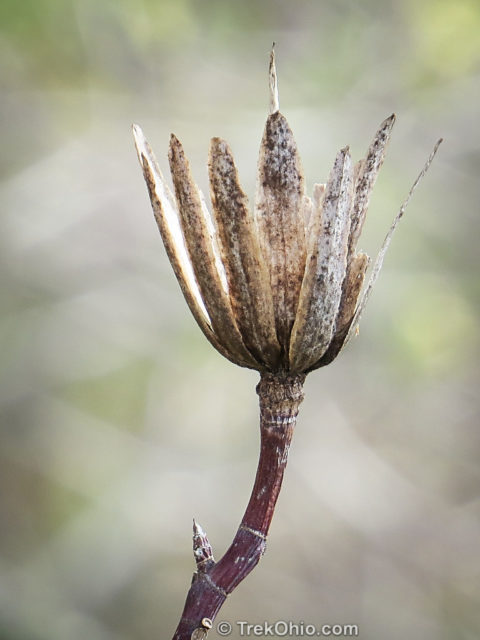
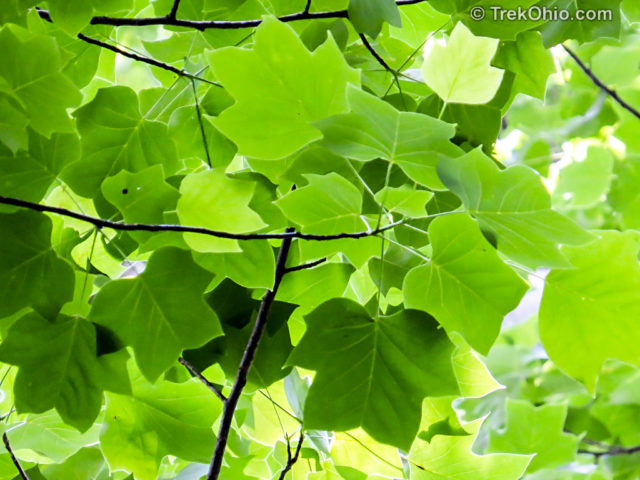
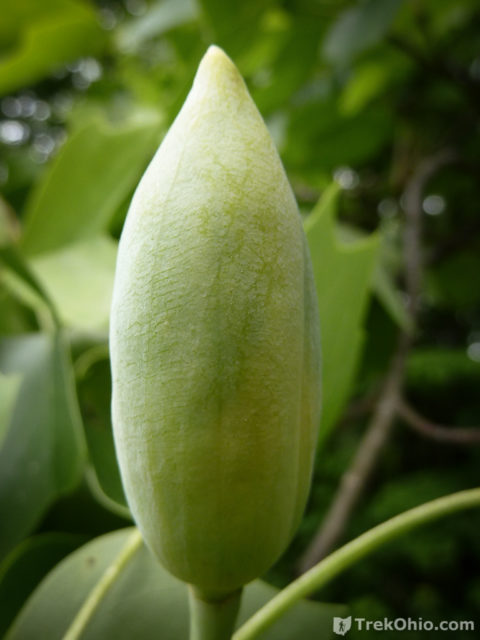
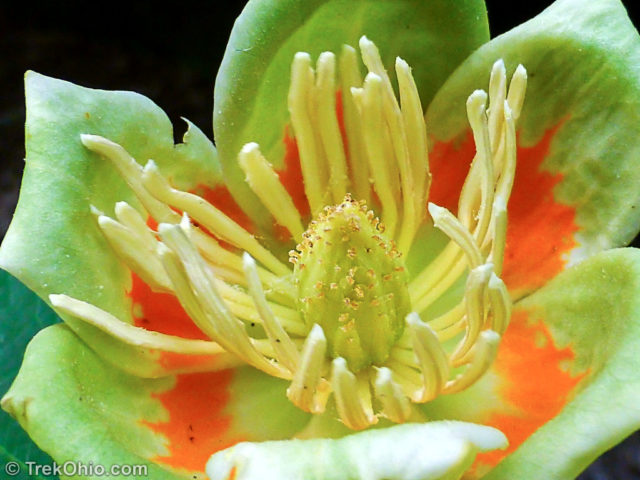
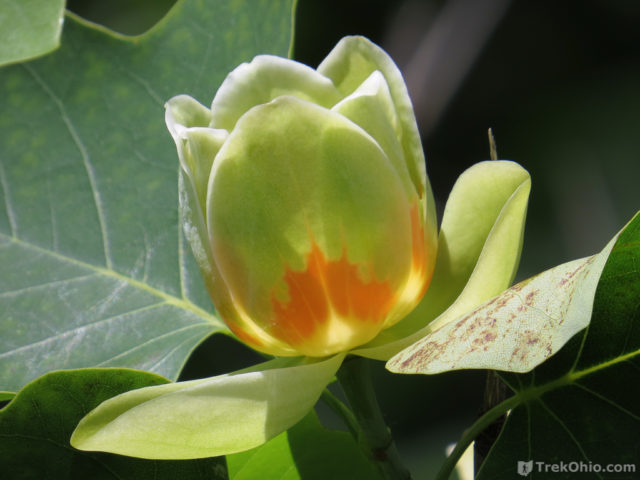
Additional information
- USDA Forest Service: Liriodendron tulipifera
- Missouri Botanical Garden: Liriodendron tulipifera
- Virginia Tech: Yellow Poplar
- Columbia Univ: List of Oldest Tulip Trees in US
- TrekOhio Clear Creek Metro Park
- TrekOhio Miller Nature Sanctuary
- TrekOhio Lamping Homestead
More on Trees
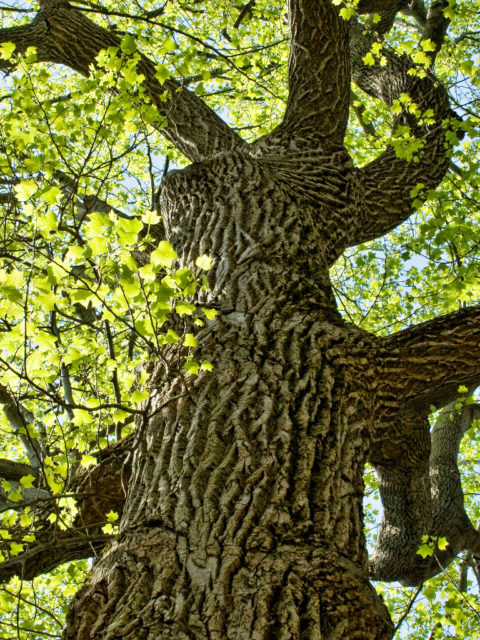
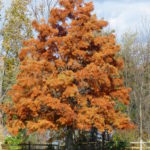
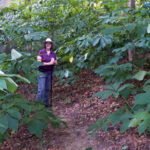
I remember seeing a tulip tree for the first time and thinking how stunning its flowers were. They still amaze me each time I see them! Love the close up of the blossom, exquisite shots. 🙂
And then there are the Klingons, which are the seeds after they’ve separated. Their original attach point can be a bit sharp.
There are also quite a few very nice large tulip trees in Shallenberger State Nature Preserve. At one point along the trail is a location where three grew up very close together, to the point of looking like one triple-tree.
Haven’t seen them at Shallenberger – I’ll have to keep an eye out for them. I’ve seen a few on the Marie Hickey Trail at Blackhand Gorge.
Just thought I’d add that tulip trees are in the Chicago area as well since the range map doesn’t show that. They’re so beautiful in the spring, but you have to remember to look up! I love your photos of them 🙂
Its used for both lumber and landscaping purposes, so it gets planted outside its native range. Here’s one in Britain at Kew Royal Botanic Gardens.
Always look forward to your posts and excellent photography!
Thank you.